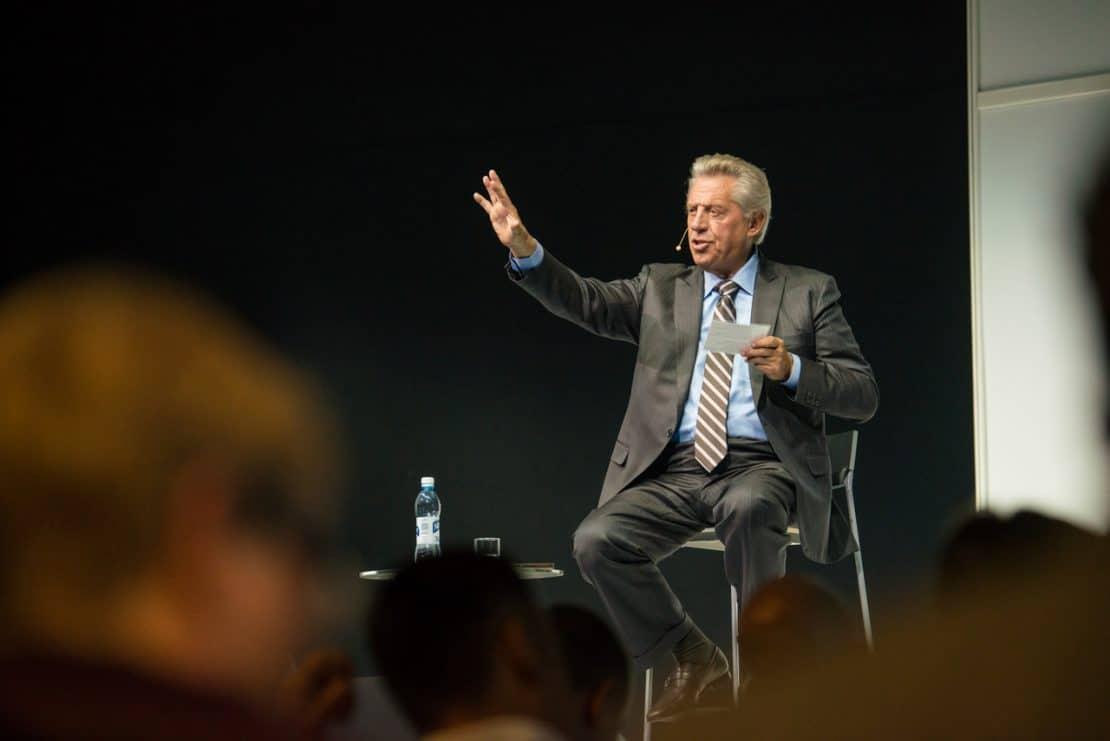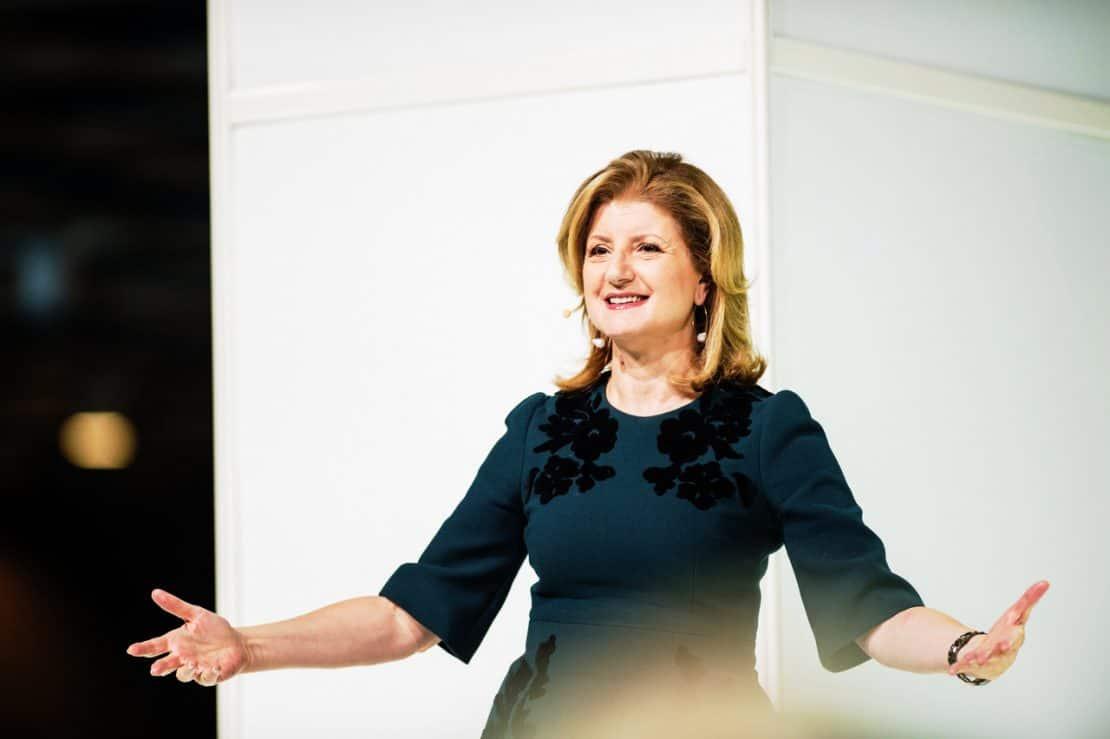18Dec2015
An interview with Professor Carlo Ratti.
Professor at MIT, the Italian-born Carlo Ratti has trained as an architect and engineer, studying at the Politecnico di Torino, the École Nationale des Ponts et Chaussées in Paris as well as the University of Cambridge. The holder of several patents and co-author of over 250 publications, Professor Ratti has been noted on countless lists of best ‘innovators’, ‘designers’ and ‘inventors’ by the likes of Esquire, Time, and Forbes. He has also been a curator for a number of Expo pavilions and the like (which we discuss below), along with the project that seems to be the focus of a lot of his energies – the SENSEable City Lab, at MIT. During the interview much was discussed from big data and the Internet of Things to sensory experiences and our relationship and shopping behavior with food. Links to talks, material and projects have been provided below – like me you’re sure to find something to get your creative juices flowing!
Can you tell us more about the SENSEable City Lab?
Senseable City Lab started in 2004. At the time, new technologies were promising exciting transformations in communication, transportation, and fabrication. We tried to imagine how these developments could impact urban studies and how the unprecedented interaction of digital and physical would affect the way we understand, design and ultimately live in cities. The convergence of bits and atoms, which is now a reality. Our projects always focus on real city problems, from energy to traffic, from waste to water management. We know that sensors and digital-control technologies will quickly transform our cities into “computers in open air”. The information we can collect from the city around us can help us understand, design and manage it. Through these instruments, we develop strategies to improve people’s lives.
Do you think patents and closed innovation inhibits the discovery of more disruptive innovations?
The question is not new. Benjamin Franklin – father of a capitalist nation – expressly engaged this tension. He wrote: “As we enjoy great advantages from the inventions of others, we should be glad of an opportunity to serve others by any invention of ours; and this we should do freely and generously.”
At first, it might seem difficult to disagree with Franklin’s position. However, closer scrutiny of the ‘open’ and ‘closed’ rhetoric ultimately rely, in most cases, on the notion of ‘maximizing impact’.
Sometimes impact maximization happens with closed innovation, other times with an open approach.
With increasing use of mobile phone data, what would you like to happen that would help improve your research?
We started research into mobile phone data for urban analysis over 10 years ago. It is very interesting urban information as it can describe the “pulse” of the city. I wish that the data were made more available for the research community at large – and perhaps enter the “open data” domain.
Your Engaging Data program at MIT looks at addressing the misuse of data. What can you tell us about this?
The ability to collect digital information on a massive scale can go from a tool of potential liberation — the fuel that drives Open Data initiatives in cities and states across the world — into an instrument of abuse, surveillance and asymmetrical control. As in Italo Calvino’s prescient 1960s short story “The Memory of the World,” humanity’s act of infinite auto-transcription can turn to drama. In order to avoid such outcomes we should have an open, wide discussion: this has been the goal of the “Engaging Data” endeavor at MIT.
What technology has not caught fire in the public consciousness in the way you expected?
RFID-powered Internet of Things (IoT), among many things, did not explode as everyone expected. One reason is the lack of a common reading platform for RFID. Conversely, IoT will most likely materialize thanks to mobile connectivity. As it often happens, ideas sometimes fail with one technology and then come back with another one (think Dodgeball versus Foursquare).
In your 2011 TED talk, you showed people ‘playing’ with your water-sensory architectural creations. What other interesting examples of humans ‘playing’ with technology were unexpected?
Here is one example out of many: during the summer of 2011, researchers at the MIT Senseable City Lab undertook a project (backtalk) to study the fate of used and discarded electronic refuse. As part of the project, the MIT team developed two different types of self-reporting technologies to track on obsolete electronics as they traveled across the world for recycle or reuse.
One of the machines used by project researchers to record images was stolen from the lab’s MIT headquarters. Researchers were able to recover the machine, utilizing the new tracking technologies developed for the project. This follows up (literally!) to the MoMA project was completely unexpected – and led to the burglar’s prosecution.
The Future Food District
The Future Food District (FFD) at the Expo Milano 2015 “Feeding the Planet, Energy for Life”, is a thematic pavilion that explores how digital technology can change the way that people interact with food. Designed by the Carlo Ratti Associati, together with supermarket chain COOP Italia, the pavilion explores how data could change the way that we interact with the food that we eat, informing us about its origins and characteristics and promoting more informed consumption habits.

Can you tell us what you were trying to achieve with the Future Food District (FFD) at the Milan Expo 2015?
We wanted to explore new modes of exchange between users and sellers. The sharing economy started because of the availability of real-time data about products and sellers. We are ready to use AirBNB, as an example, as we can trust the person renting an apartment – and we know more about the rating of the apartment itself.
In a similar way, can we imagine a supermarket as an exchange area open to all? At the COOP supermarket in the Milan Expo, in the tradition of Italian cooperatives, we proposed that some areas should be dedicated to producers/consumers, who can use the space as a free trade area. A transposition of peer-to-peer dynamics to the supermarket – a sort of AirBnb of food.
Have you been pleased with the reaction to the FFD? What has the feedback been on the pavilion?
In general, we always value people’s feedback. At Future Food District, the pavilion we designed for Expo 2015, we have now had a very large number of visitors, who helped us explore how the food chain is evolving and how new technologies can allow us to have a more direct interactions with food.
In particular, we had to design a real supermarket, in collaboration with leading Italian retailer COOP. We started from the idea that products can tell us their stories. Products are displayed on large tables, avoiding the vertical barriers of traditional aisles. By simply touching or pointing to the products, the customer can obtain augmented information about it – that is, all the data available today on the net that does not fit on a traditional-sized label. Through these “augmented labels” products are able to communicate their properties, transformations, paths.
We have now had over one million people go through our supermarket at Expo 2015, and we studied their reactions. We are very happy that most customers – from 5 year-olds to 95-year olds – don’t need any help. And that kids run from one product to another to “eat up” a constant flow of information that opens up as an accordion in front of them.
Can you tell us more about the inspiration or ideas behind the FFD?
We wanted to allow products to tell us their stories. An image that I always liked is that of Italo Calvino’s Mr. Palomar who, immersed in a Parisian fromagerie, has the impression of being in a museum or in an encyclopedia. Calvino writes: “This shop is a museum: Mr. Palomar, visiting it, feels as he does in the Louvre, behind every displayed object the presence of the civilization that has given it form and takes form from it.”
Would a physical store not be redundant in the future as the utilization of data moves society to a more planned process of production and consumption?
I think it’s important to maintain a direct contact with products. Today we are living inside a hybrid world where boundaries between physical and digital, bits and atoms are disappearing. It is not about replacing physical with digital, but augmenting it.
EXPLORE MORE
TED talk, 2011
Future Food District, 2015
SENSEable City Lab
senseable.mit.edu/
Dimensions of the Future City (Cladel, M., Ratti, C.), (in) Cities in the 21st Century: Academic Visions on Urban Development. Abingdon: Routledge 2016
senseable.mit.edu/papers/pdf/20160229_Claudel_Ratti_DimensionsFuture_Cities21St.pdf
‘Smart people, smart nation, smart Singapore’ (Carlo Ratti & Matthew Claudel) – Straits Times
www.straitstimes.com/opinion/smart-people-smart-nation-smart-singapore
Photo credit: the Milan Expo, Shutterstock


